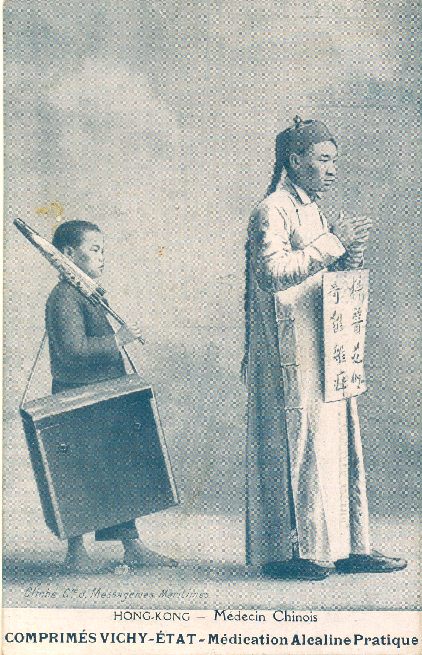 |
| French postcard, Staatsbad VICHY, around 1910. |
"The head is shorn with the men except for a small part at the back of the head, where the hair is carefully cared for and braided into a pigtail." "The stronger and longer the braid is, the more proud the owner is on it, thus barking false hair and black A plait often reaches as far as the ankle of the foot, but it is knocked around the neck during work, but it is lowered on entry into a room, for it would be against the decency and the modesty of appearing with wrapped pigtails "(Ida Pfeiffer, A Woman's Ride Around the World, Volume 2, p.19).
"The Han-Chinese men were forced to wear the typical Manchurian plait to demonstrate submission to the Qing rule and to make a visual distinction to the Manchu impossible." Of course, men wore braids and it was even considered noble and sophisticated, and it was not until the nineteenth-century crisis in the Qing state that the Qing government was increasingly stylized as a Manchurian alien and braided by Han Chinese nationalists It was one of the first measures of the revolution of 1911 to abolish the braids.
Reports from the 19th century describe how Chinese students cut their braids on their way to Europe in Singapore and bought a false black silk braid when they returned to a stopover "(Wikipedia).
|




